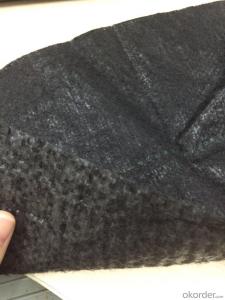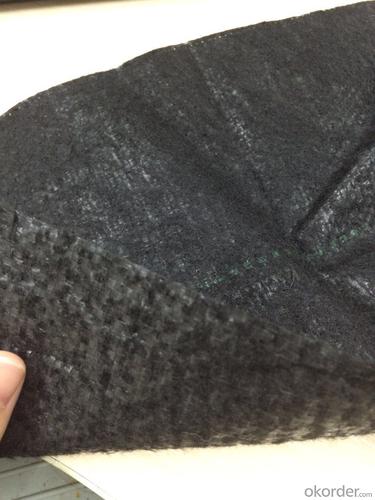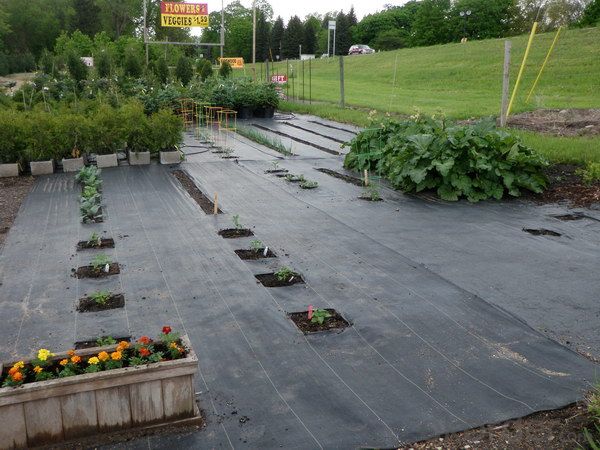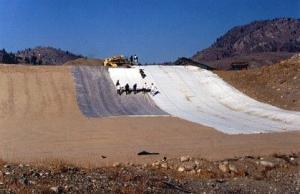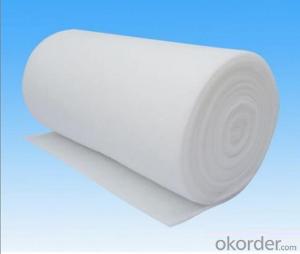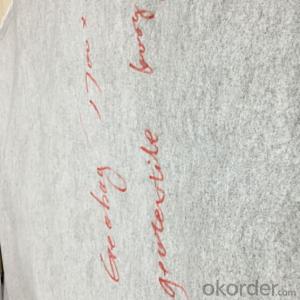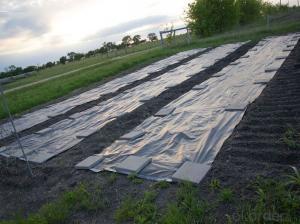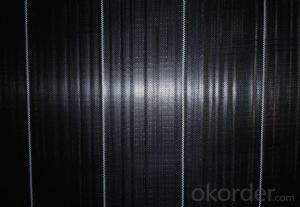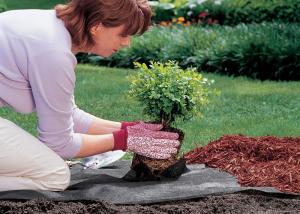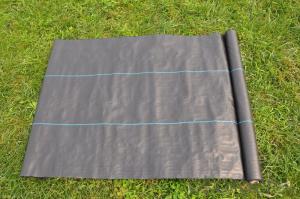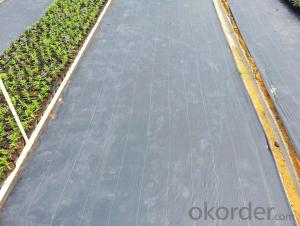Geotextile Tube Silt Fence with Pocket & Wooden Stake/Polypropylene Fabric
- Loading Port:
- China main port
- Payment Terms:
- TT OR LC
- Min Order Qty:
- 5000 roll
- Supply Capability:
- 100000 roll/month
OKorder Service Pledge
OKorder Financial Service
You Might Also Like
1. Production Introduction
Polypropylene fabric is made of environmentally friendly raw materials, pp spunbond nonwoven fabric. It used to prevent the growth of weed, without the use of potentially dangerous chemical sprays or labor intensive hoeing. Once installed, weed mat will continue providing protection for years without maintenance.

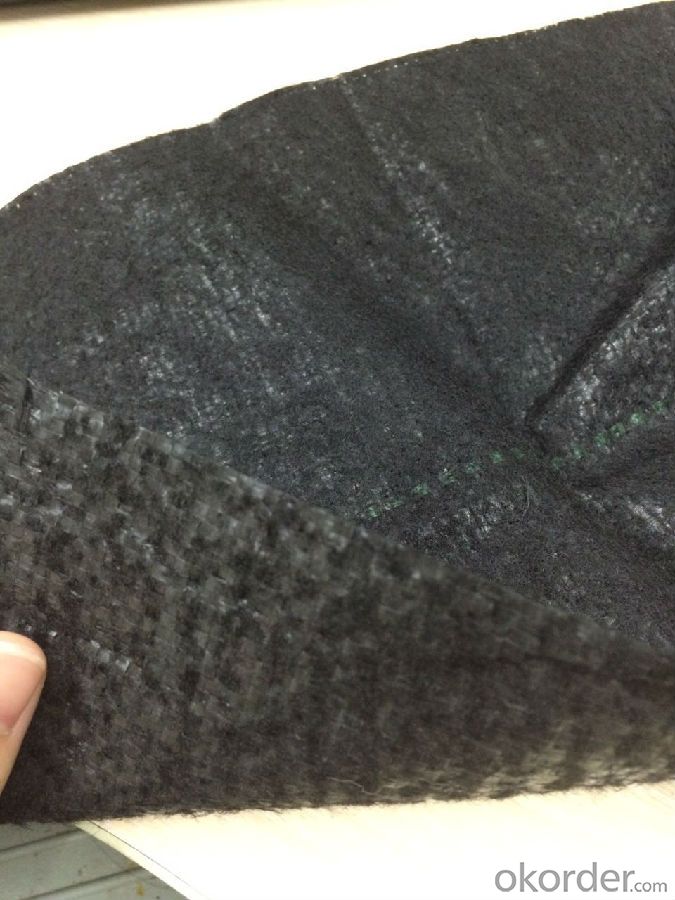
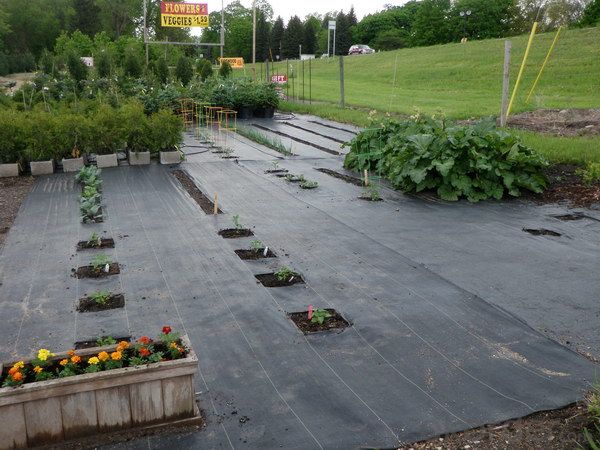
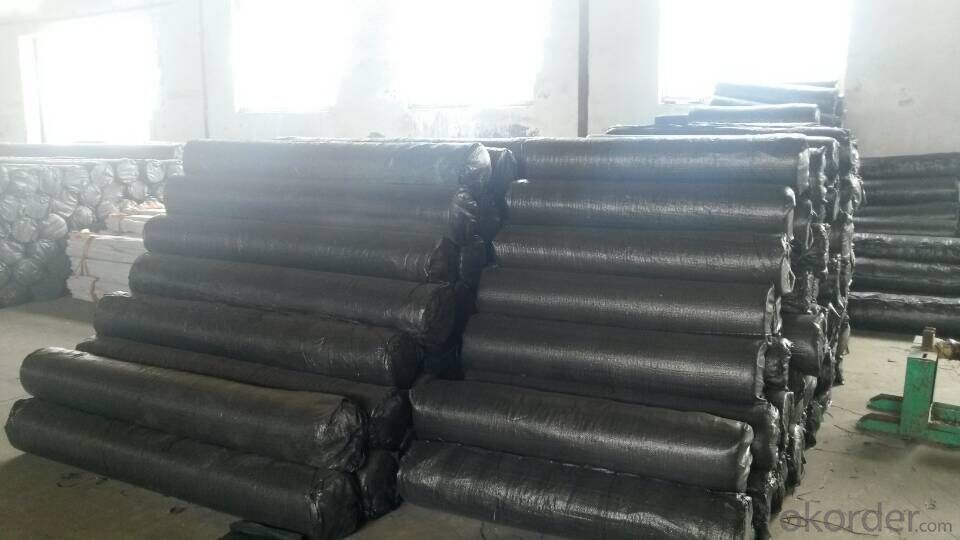
2. Production Feature:
1. Weed suppressant and drainage control landscaping fabric
2. Spun bonded non-woven fabric – will not fray when cut
3. Easy to use
4. Environmentally friendly
5. Allows water, air and nutrients through, suppressing weeds without the use of chemicals
6. Good alternative to Plantex® where cost is a factor
7. UV Stabilised
8. Reduces the level of watering required due to the slower rate of water evaporation
3. Production Function:
1. Cover crops in the ground surface,prevent weeds and against the insect
2. Controlling soil humidity and the temperature
3. Does not affect the growth of the crops
4. Protects plants from harmfully solar radiation
5. Air permeability, water permeability help crops growth.
6. Mothproof, eco-friendly, breathable, anti-bacteria, tear-resistant, fusible
4. Production Applications:
1. Weed block for landscaped garden beds
2. Permeable liners for planters (stops soil erosion)
3. Weed control under wooden decking
4. Geotextile for separating aggregate / soils under walkway blocks or bricks
5. Assists in preventing paving from settling unevenly
6. Landscape fabric prevents soil erosion
5. FAQ:
Q1: What is your minimum order quantity?
A:The minimum order quantity is 5000 ,but it is negotiable.
Q2:What is your payment terms?
A: T/T,Western Union,Paypal,L/C...
Q3:What is your delivery time?
A:Production time usually costs 2-20 days.
Waiting to cooperate with you!
- Q: Geotextile cost how much money a flat
- Geotextile laying - including the labor costs (according to geotextile specifications and laying conditions and requirements are different), material costs (specific quality requirements and thickness, are not the same ..), mechanical use costs (such as transport, sewing System, hoisting, etc.). The price is different. Sometimes the construction of our geotextile laying, the price per square meter from 9 yuan to 50 yuan range.
- Q: Can geotextiles be used in wastewater treatment applications?
- Yes, geotextiles can be used in wastewater treatment applications. They are commonly used in various stages of the treatment process, such as filtration, separation, and erosion control. Geotextiles help to remove solids, retain suspended particles, and prevent clogging in wastewater treatment systems.
- Q: Do you want to use glue to connect the geotextile?
- Shuo earth geotextile production of drainage board geotextile, Manager Li
- Q: How do geotextiles help with reinforcement of geotextile containers?
- Geotextiles help with the reinforcement of geotextile containers by providing additional strength and stability. They are placed inside the containers to prevent soil erosion and improve the overall structural integrity. Geotextiles act as a barrier, distributing the forces exerted by the contained material and enhancing its load-bearing capacity. Additionally, they allow for the proper drainage of water, reducing the risk of water buildup and potential damage.
- Q: Are geotextiles suitable for use in groundwater remediation systems?
- Yes, geotextiles are suitable for use in groundwater remediation systems. Geotextiles can act as a barrier to prevent the migration of contaminants and provide filtration for groundwater. They can also enhance the effectiveness of other remediation methods by improving the distribution and retention of remedial agents. Additionally, geotextiles are durable, cost-effective, and environmentally friendly, making them a suitable choice for groundwater remediation systems.
- Q: Are geotextiles suitable for use in landfill applications?
- Yes, geotextiles are suitable for use in landfill applications. They are commonly used to separate the waste from the underlying soil, providing stability and preventing the mixing of different materials. Geotextiles also help with drainage and filtration, reducing the risk of groundwater contamination. Additionally, they can enhance the overall performance and lifespan of the landfill by reducing erosion and increasing the structural integrity of the waste containment system.
- Q: Are geotextiles resistant to hydraulic shear stress?
- Yes, geotextiles are generally resistant to hydraulic shear stress. They have a high tensile strength and are designed to withstand the forces exerted by flowing water or other hydraulic conditions, making them effective in erosion control and soil stabilization applications.
- Q: What are the advantages of using geotextiles in green roof systems?
- The advantages of using geotextiles in green roof systems include improved drainage, erosion control, and increased structural stability. Geotextiles help prevent soil erosion by allowing water to drain through while retaining the soil. They also provide a strong base for the green roof system, enhancing its structural integrity. Additionally, geotextiles can act as a filter, removing pollutants and sediments from rainwater runoff, resulting in improved water quality.
- Q: What are the specifications for geotextiles in drainage projects?
- The specifications for geotextiles in drainage projects typically include factors such as the material type, weight, permeability, and strength. The geotextiles should be made of durable and non-biodegradable materials such as polypropylene or polyester. The weight of the geotextiles is generally specified in terms of grams per square meter (gsm), with heavier weights often preferred for better performance. Permeability is an important factor, and geotextiles with high permeability allow for efficient water flow while preventing soil erosion. Additionally, the geotextiles should possess adequate strength to withstand installation stresses and ongoing loadings. Overall, the specifications ensure that the geotextiles effectively separate, filter, and reinforce the soil in drainage projects.
- Q: What are the advantages of using geotextiles over traditional construction materials?
- Geotextiles offer several advantages over traditional construction materials. Firstly, they provide enhanced stability and reinforcement to the soil or other substrates, reducing the need for extensive excavation or additional structural support. Secondly, geotextiles are permeable, allowing water to pass through while preventing soil erosion, thus improving drainage and reducing the risk of flooding. Additionally, geotextiles are lightweight and easy to handle, making them cost-effective and efficient to install. Lastly, these materials have high resistance to environmental factors such as chemicals, UV radiation, and biological degradation, enhancing their longevity and durability. Overall, geotextiles provide a versatile and sustainable solution for a wide range of construction applications.
Send your message to us
Geotextile Tube Silt Fence with Pocket & Wooden Stake/Polypropylene Fabric
- Loading Port:
- China main port
- Payment Terms:
- TT OR LC
- Min Order Qty:
- 5000 roll
- Supply Capability:
- 100000 roll/month
OKorder Service Pledge
OKorder Financial Service
Similar products
Hot products
Hot Searches
Related keywords
